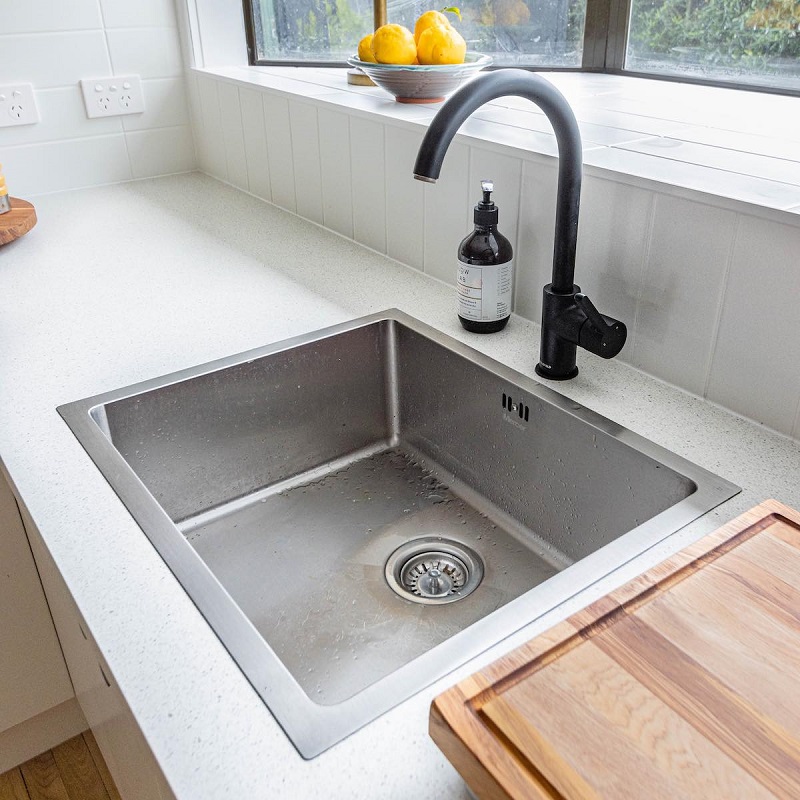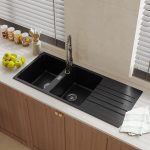Selecting the right material for your kitchen sink is a crucial decision that can affect both functionality and aesthetics. With various options available, each material comes with its unique advantages and disadvantages. This comprehensive guide will delve into the most popular kitchen sink materials, helping you make an informed choice.
Understanding Kitchen Sink Materials
The Importance of Material Choice
The material you choose for your kitchen sink significantly impacts its durability, maintenance, and overall look. Sinks are subjected to daily wear and tear, so understanding the properties of different materials is essential. Factors such as resistance to stains, scratches, and heat, as well as ease of cleaning, should guide your decision. Additionally, the style of your kitchen should complement the sink’s material, ensuring a cohesive look.
Overview of Popular Materials
There are several materials commonly used for kitchen sinks, including stainless steel, cast iron, composite, porcelain, and granite. Each of these materials offers distinct characteristics that cater to different preferences and needs. For example, stainless steel is favored for its modern appeal and durability, while cast iron is prized for its classic look and sturdiness. Understanding the pros and cons of each material will help you narrow down your options.
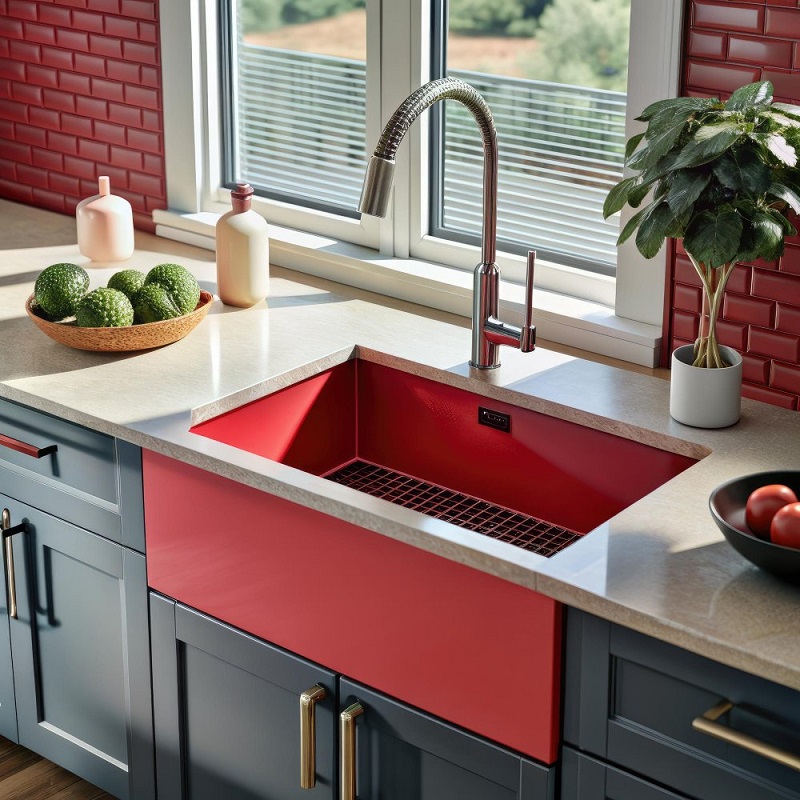
Stainless Steel Sinks
Benefits of Stainless Steel
Stainless steel sinks are among the most popular choices for kitchens. Their sleek, modern appearance complements a variety of kitchen designs, from contemporary to industrial. One of the primary advantages of stainless steel is its durability; it is resistant to rust, corrosion, and staining, making it an excellent option for high-usage areas. Additionally, stainless steel is easy to clean and maintain, requiring only soap and water to keep it looking new.
Drawbacks of Stainless Steel
While stainless steel sinks are generally resistant to damage, they are not entirely impervious to scratching or denting. Heavy pots or sharp utensils can leave marks on the surface. Additionally, the noise produced by water splashing in a stainless steel sink can be bothersome. Some manufacturers offer sound-deadening pads to mitigate this issue, but this can add to the overall cost. Lastly, the finish on stainless steel can dull over time, requiring occasional polishing to maintain its shine.
Cast Iron Sinks
Advantages of Cast Iron
Cast iron sinks are known for their robust construction and classic aesthetic. They are coated with enamel, which provides a glossy finish that can be found in various colors. One of the significant advantages of cast iron is its heat retention, making it an ideal choice for those who often use hot pots or pans. Cast iron sinks are also resistant to chipping and scratching, ensuring they maintain their beauty over time.
Disadvantages of Cast Iron
Despite their durability, cast iron sinks can be quite heavy, requiring additional support during installation. They are also more prone to chipping if subjected to heavy impact. Moreover, the enamel coating can stain or discolor over time, especially if not cleaned properly. Regular maintenance is necessary to keep the sink looking its best, and using harsh chemicals can damage the enamel.
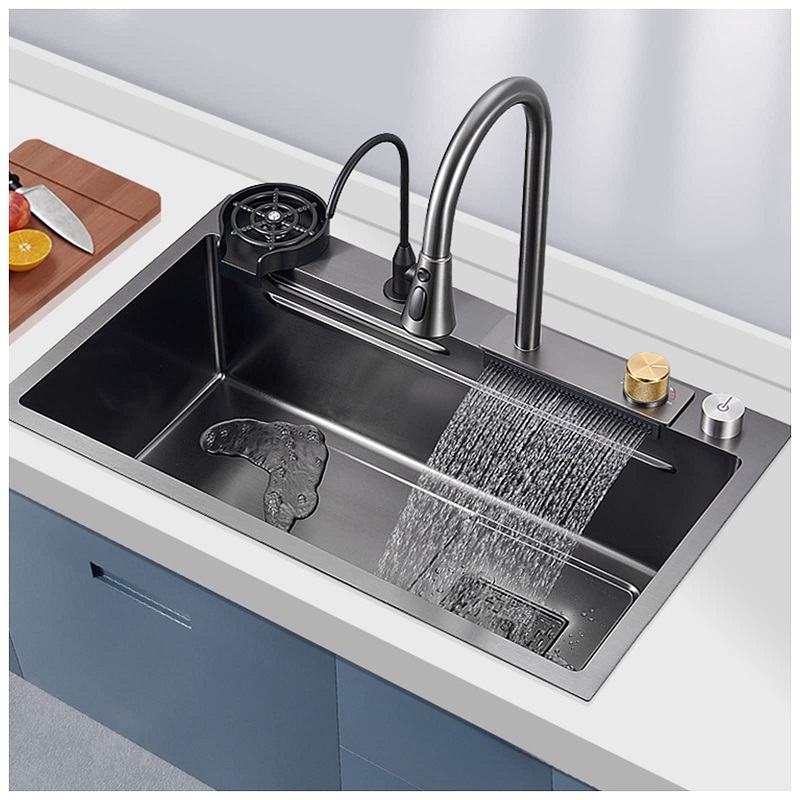
Composite Sinks
Features of Composite Materials
Composite sinks are made from a blend of materials, typically acrylic and stone, which creates a durable and stylish option for kitchens. They are available in various colors and finishes, offering versatility to match different kitchen styles. One of the most significant benefits of composite sinks is their resistance to scratches and stains, making them an excellent choice for busy kitchens. They also tend to be quieter than stainless steel sinks, reducing noise levels when washing dishes.
Limitations of Composite Sinks
While composite sinks are durable, they are not entirely impervious to damage. High temperatures can cause warping, so it’s essential to avoid placing hot pots directly in the sink. Additionally, some composite materials may fade over time, especially when exposed to direct sunlight. Regular cleaning with non-abrasive products is necessary to maintain their appearance. It’s also worth noting that composite sinks can be more expensive than traditional materials, so budget considerations may play a role in your decision.
Porcelain Sinks
Benefits of Porcelain
Porcelain sinks offer a timeless look that can elevate the aesthetic of any kitchen. They are easy to clean and maintain, as their smooth surface prevents food particles from sticking. Porcelain is available in a variety of colors, allowing for customization to fit your kitchen decor. Additionally, they are resistant to stains and scratches, making them suitable for daily use.
Disadvantages of Porcelain
On the downside, porcelain sinks can chip or crack if subjected to heavy impacts. They require careful handling during installation to prevent damage. Moreover, while they are generally resistant to stains, some foods or liquids can cause discoloration if left unattended for extended periods. Regular maintenance and gentle cleaning products are necessary to keep porcelain sinks looking their best. Furthermore, porcelain sinks can be heavy and may require additional support.
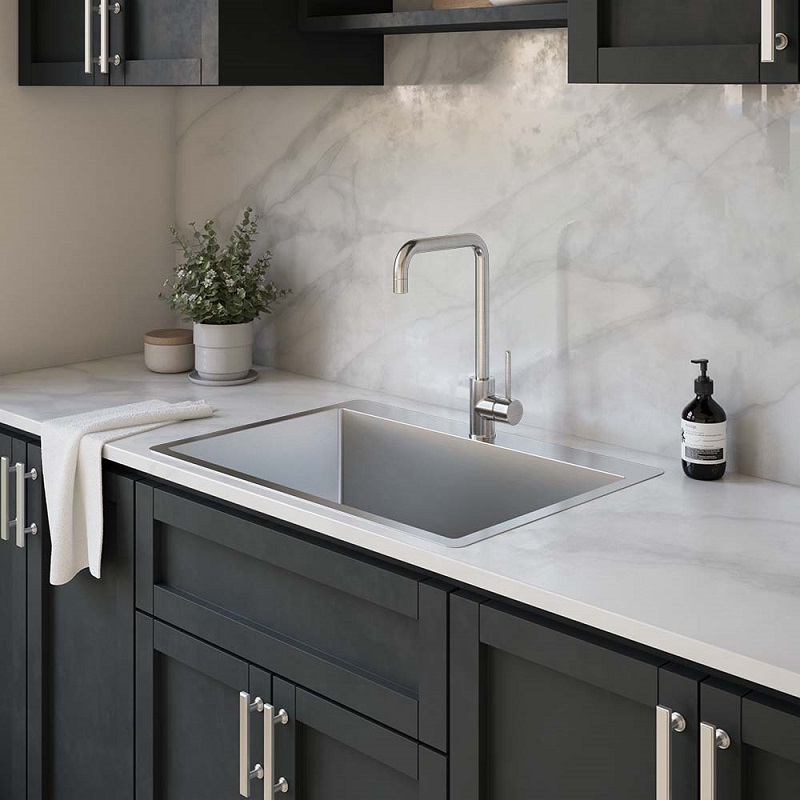
Granite Sinks
The Appeal of Granite
Granite sinks are a luxurious option that combines beauty and functionality. They are made from natural stone, which gives them a unique appearance that can complement high-end kitchen designs. One of the primary benefits of granite sinks is their durability; they are resistant to scratches, chips, and heat, making them ideal for heavy use. Additionally, granite is non-porous, preventing bacteria and stains from penetrating the surface.
Challenges of Granite Sinks
While granite sinks offer numerous advantages, they are also one of the more expensive options available. The cost of installation can be higher due to the weight of the material, which may require reinforced cabinetry. Furthermore, granite sinks can be challenging to repair if they do get chipped or cracked, as matching the natural stone can be difficult. Regular sealing is also necessary to maintain the sink’s resistance to stains and bacteria, adding to the long-term maintenance requirements.
Budget Considerations
Analyzing Costs
When choosing a kitchen sink, it’s essential to consider your budget. Prices can vary significantly between materials, with stainless steel and composite sinks often being more affordable than granite or cast iron. Assessing the overall cost should include not just the sink itself, but also installation expenses and any additional maintenance requirements. This will help you determine which material fits your financial plan without compromising quality.
Long-Term Investment
While it may be tempting to opt for a cheaper sink, it’s important to consider the long-term investment. Higher-quality materials may have a higher upfront cost but often provide better durability and lower maintenance expenses over time. Think about how frequently you use your kitchen sink and the level of wear it will experience. Investing in a durable material can save you money in the long run, reducing the need for repairs or replacements.
Style and Aesthetic Considerations
Matching Kitchen Decor
The style of your kitchen sink should harmonize with your overall kitchen design. Whether you prefer a modern, minimalist look or a classic, farmhouse aesthetic, the sink’s material and finish play a significant role. Stainless steel sinks offer a sleek, contemporary vibe, while porcelain and cast iron can provide a more traditional appearance. Composite sinks often come in various colors, allowing for more customization to suit your taste.
Creating a Cohesive Look
Consider how the sink will integrate with other elements in your kitchen, such as countertops, cabinetry, and appliances. For instance, a granite sink pairs beautifully with natural stone countertops, while stainless steel can complement sleek, modern appliances. The right choice will create a cohesive look that enhances the overall design of your kitchen.
Maintenance and Care
Cleaning Requirements by Material
Different sink materials require different cleaning methods. Stainless steel is easy to maintain with soap and water, while porcelain may need non-abrasive cleaners to avoid scratches. Composite sinks can be cleaned with a mild detergent, and granite sinks often require specialized cleaners to maintain their finish. Understanding the maintenance needs of each material will help you keep your sink looking great for years to come.
Preventive Measures for Longevity
To extend the life of your kitchen sink, implement preventive measures. For instance, using cutting boards can prevent scratches on stainless steel or composite sinks. Placing hot items on trivets or cooling racks can protect porcelain and granite sinks from thermal damage. Regularly sealing your granite sink will help maintain its non-porous properties. By taking these steps, you can enjoy the beauty and functionality of your sink for many years.
Conclusion: Making Your Final Decision
Weighing Your Options
Ultimately, the decision on which sink material to choose will depend on your specific needs, preferences, and budget. Take into account the advantages and disadvantages of each material, as well as how they fit into your overall kitchen design. By weighing these factors carefully, you can make a well-informed decision that will enhance both the functionality and beauty of your kitchen.
